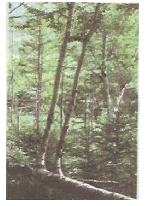Advertisements
Advertisements
Question
P and Q are two types of plants having weak stems which cannot stand upright on their own. The plants P and Q have organs R and S respectively which can grow towards any support which they happen to touch and wind around that support. It is observed that organ R originates from the leaves of the plant whereas organ S originates directly from the stem of the plant.
(a) What is (i) R, and (ii) S?
(b) What is the name of growth movement exhibited by the organs R and S?
(c) Name the stimulus involved in this case.
(d) State whether the behaviour of organs R and S is a tropic movement or a nastic movement.
(e) Name one plant like P and another plant like Q.
Solution
(a) (i) R is a leaf tendril and (ii) S is a stem tendril.
(b) The growth movement exhibited by R and S is thigmotropism.
(c) The stimulus involved is touch or contact with other objects.
(d) The behaviour of R and S is a tropic movement.
(e) Pea plant is an example of plant type P, whereas bitter gourd plant is an example of the type Q.
APPEARS IN
RELATED QUESTIONS
What does a root do in response to gravity? What is this phenomenon known as?
What does a root do in response to light? What is this phenomenon known as?
What is a tendril?
Plant shoot grows upward in response to ______.
How does phototropism occur in a plant stem (or shoot)? Explain with the help of labelled diagrams.

A big tree falls in a forest but its roots are still in contact with the soil.
The branches of this fallen tree grow straight up (vertically). This happens in response to ______.
The climbing organs of plants like tendrils grow towards any support which they happen to touch and wind around the support. This is an example of :
(a) chemotropism
(b) nastic movement
(c) thigmotropism
(d) geotropism
The movement of sunflower in accordance with the path of sun is due to
Analogy:
Towards a stimulus: ______:: Away from the stimulus: Negative tropism.
Which parts of a plant exhibit Negative geotropism?
